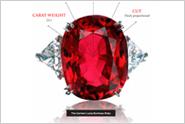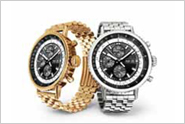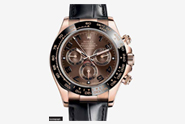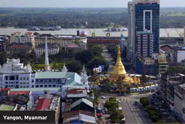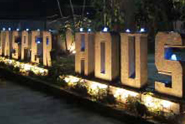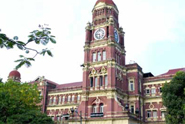yangon day Trips
Working in the city everyday can take its toll on our sanity. I try to get away for a few days every month to recharge the batteries and enjoy some of the delightful places that Myanmar has to offer. Here are five of my favourites.
Bago
The city enjoyed its glory days in the 13th century when Kubilai Khan’s Mongol forces destroyed Bagan, forcing King Warau to move the seat of his Mon Empire to Bago. The city was annexed by the Taungoos in 1539 but continued to flourish as a busy river port before the river changed its course in the 18th century, leaving Bago to become the mid sized regional town it continues to operate as today.
Hardly surprisingly for a city so steeped in Buddhist history, Bago is renowned for its abundance of temples and pagodas and has been described by visitors as a “Buddhist Disneyland”.
Its most famous pagoda is Shwemawdaw, standing 46 feet higher than the more famous Shwedagon in Yangon and said to be the tallest pagoda in the world. It has been rebuilt several times over the years and apparently contains two hairs and two teeth of the Buddha.
Other places worthy of a visit are the Hintha Gon Pagoda, the reclining Shwethalyaung Buddha and Kanbawzathadi Palace, a reconstruction of the palace built by 16th century ruler King Bayinnaung.
Bago can be reached in less than two hours from Yangon’s Aung Mingalar Bus Station.
Dallah
As Yangon sprouts shiny, modern condominiums and imports the latest Japanese cars, across the river in Dallah, life continues much as it did hundreds of years ago.
Bulls plough the abundant farmland around the town and houses are not much more than basic wooden huts on stilts. Outside, the owners sit lazily, watching the day go by and puffing on their cheroots.
It’s a beautiful, calm spot to really get to grips with the country without venturing too far from Yangon.
The operators of the Dallah Ferry, which leaves from Yangon’s Pansodan jetty, have (unfortunately) recognised the town’s popularity among tourists – hiking foreigner prices five fold in the last few years – but still it doesn’t attract too many tourists, and the ten-minute ferry trip offers a fascinating, if brief, glimpse at river travel in the country.
In Dallah itself, the most popular ways of travelling around are either by bicycle or trishaw, and there are a number of placid pagodas, but the town’s highlight is the simple lifestyle offered in comparison to the relative chaos on the other side of the river.
Twante
Twante sits on the scenic canal by the same name, and it is through this waterway that boats travel from Yangon.
Once renowned for its art, today Twante attracts visitors interested in the city’s burgeoning pottery industry. Pots are worked by hand as an assistant manually turns the potter’s wheel. Once the pots have been painted and dried, they are baked for five days. They are then transported to the surrounding Irrawaddy region for sale, where they are generally well received thanks to the reputation Twante’s pottery industry has built for itself.
The most popular pottery shed is Oh Bo (most rickshaw drivers in the town will have heard of it), and another popular site is the Shwesandaw Pagoda.
British writer George Orwell also spent some time living in the town and the old Police Commissioner’s house in the town is thought to be where he lived during his brief stay there.
Thanlyin
Despite being an important town during the British Empire, Thanlyin (named Syriam by the British) was actually founded by a Portuguese adventurer by the name of Filipe DeBrito.
DeBrito served under the King of Arakan, becoming the governor of Thanlyin in 1599, but in 1613, his empire was ransacked by the Burmese and DeBrito’s reign came to a humiliating end as he was impaled on a spike for desecrating Buddhist shrines.
During World War II, Thanlyin was used by foreign – mostly timber – merchants, but that population has now moved on and has been replaced by a large Indian contingent.
The town these days is very small and mostly revolves around an old church from the 18th century, as well as a central marketplace, while nearby Kyauktan is another popular spot worthy of a visit.
mount kyaiktiyo (golden rock)
Leave Yangon early in the morning, climb aboard a bus from the bottom of the mountain that traverses the winding roads to the top, and rush back down to catch the first bus back, and Mount Kyaiktiyo – one of the country’s most pious sites – is possible as a day trip. However, if a little more time is available, it’s a more comfortable trip over two days.
Kinpun is the mountain’s ground zero. It’s a pleasant, basic town, accessible in less than four hours from Yangon. A few local restaurants here and there and the one road filled on each side with shops selling the usual tourist trinkets, but aside from that, there aren’t many reasons to stick around. There are a few basic but reasonable accommodation options in town for those who want to spend the night.
Some choose to travel to the top by bus but, again, those with time on their hands are advised to walk.
It’s challenging but not too strenuous, and can usually be done in about five hours. The path is well maintained and you will be greeted by the friendly smiles of the local people as you ascend.
Up top, as the Golden Rock is a popular pilgrim site for Buddhists, it is particularly busy, but it’s worth spending a bit of time to take in the beautiful views that stretch across the dense Mon forestry.


